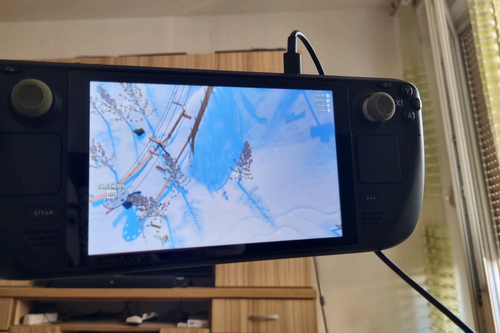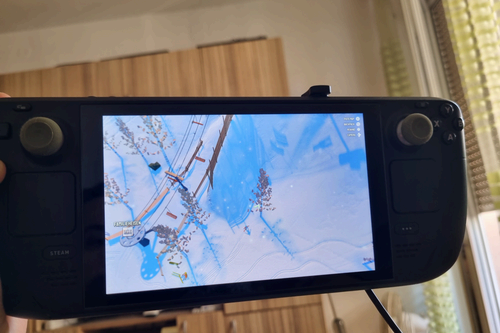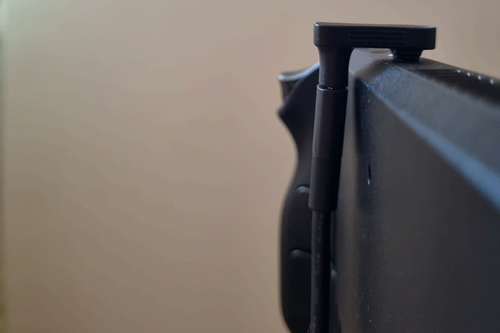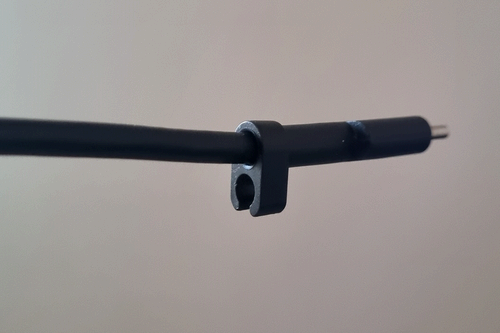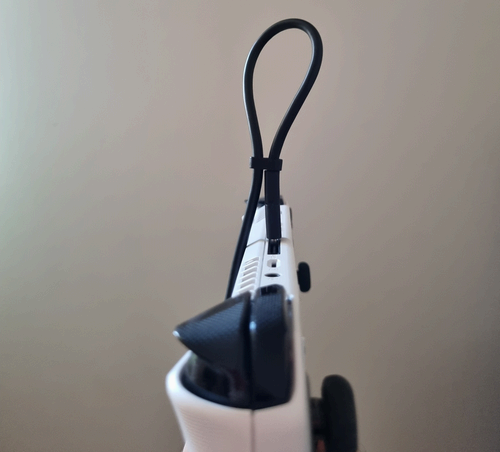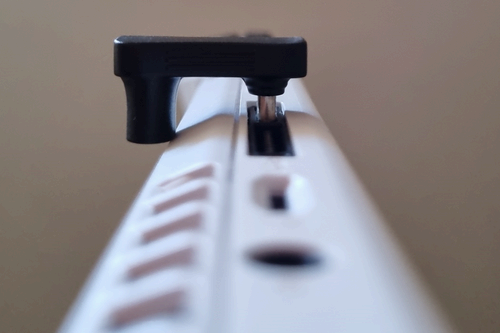Key Takeaways
- Using a 180-degree USB-C-to-USB-C charging adapter eliminates the worry of breaking the Steam Deck’s USB-C port and allows for more maneuverability while gaming.
I’ve been using a Steam Deck LCD for about a year now, and despite it being one of the best gadgets I’ve ever owned, it does come with its share of quirks. And while we can’t do anything about a good chunk of the Deck’s deficiencies, we can cure some shortcomings with just a few bucks.
The Problem With the Steam Deck’s Charging Port
One of the biggest stumbling points of virtually every long-term gaming session on my Steam Deck is that dreadful moment when I have to hook the thing to a charger.
Now, I mostly play games on my handhelds while lying down on my couch in the living room or doing the same on the bed in the bedroom. And because the Steam Deck comes with a single USB-C port located on top of the device, connecting it to a charger immediately makes me anxious. That’s because the cable not only bends downwards at a worryingly sharp angle, but I can also feel the force the cable and its USB-C connector exert on the Deck’s USB-C port.
Steam Deck without a charging adapter. That cable doesn’t look good. It’s super tense, exerting force on the Deck’s USB-C port.
Every movement of the console yanks the cable and the connector left and right. The feedback traveling through the Deck and into my hands, and the dreaded feeling that something’s going to break the next time I advance, sticks with me admire a stubborn stain on a white shirt. After a few minutes, the gaming session turns into a physical challenge where I try to game as motionlessly as possible. It doesn’t take long before I stop enjoying the game and start getting anxious about breaking my Deck.
The cherry on top is that the official charger only has a five foot long charging cable, forcing me to lie at unnatural angles to reduce the cable’s strain. The Steam Deck OLED, on the other hand, comes with an eight foot cable, so I suspect the cable strain issue is less pronounced there.
An Angled USB-C Adapter Is a Godsend for Every Steam Deck Owner
The solution to this whole conundrum is a tiny, super-affordable piece of tech called a 180-degree USB-C-to-USB-C charging adapter. I forgot where I first saw it—probably on the Steam Deck subreddit—but as soon as I saw the image of a Deck equipped with one, I knew it was the solution to this particularly vexatious problem.
Once you hook the charging adapter, the cable isn’t as strained, and it also doesn’t exert force on the Deck’s USB-C port.
And well, whaddya know? This tiny gadget completely transformed the go through of charging my Deck while gaming. I no longer have to worry about breaking the USB-C port every time I adjust myself or my Deck. I even neglect the thing’s charging because using the angled adapter not only makes the cable fall straight down, it also frees up a good portion of it.
You can get the angled adapter I’ve been using on Amazon. Just don’t neglect that this is a cheap piece of hardware, not made to last for years. In other words, don’t think you’ll get one and then use it until the end of time.
Amazon sellers also know this, which is the most likely reason why virtually every listing featuring these 180-degree adapters sells them in bundles of two or more. If you’re feeling extra adventurous, you can order one from AliExpress. They’re much cheaper there, but you’re going to expect much longer for the adapter to reach. Just look for a listing with a ton of five-star reviews.
ASUS ROG Ally Owners Can Also Get an Angled Charging Adapter But Don’t Have To
If you own an ASUS ROG Ally, you don’t have to get an angled adapter because the bundled charger comes with a tiny rubber clamp that can hold the cable and hinder it from putting force on the USB-C port.
And since the Ally’s power brick cable is much longer than the Steam Deck’s, you don’t have to worry about straining the cable. In most cases, the cable’s long enough to reach the nearest power outlet and leave you with a hefty breathing room for adjusting your body and the console without putting force on the Ally’s USB-C port.
If you still want to order one, do not get the one linked above. That one doesn’t fit the ROG Ally; the device is too chunky for it. Get the angled USB-C adapter from JSAUX; that one fits both the Deck and the Ally. If you own a Nintendo Switch, feel free to get either of the two; the Nintendo console is slim enough for the one I’m using.
As you can see, my ASUS ROG Ally’s too thick for the charging adapter I’ve been using with my Steam Deck.
If you own a Lenovo Legion Go, congratulations! Lenovo equipped their handheld with two USB ports, one of which is on the bottom of the device, allowing you to charge your Legion Go without worrying that any sudden yank will break the USB-C port.
Bonus Pro-Tip for Prospective Steam Deck Owners: Get Thumbstick Grips
If you strategize on getting a Steam Deck LCD and have stumbled on this article while scouring the web for must-have Steam Deck accessories to get before your console arrives, I’ve another pro-tip for you: get thumbstick grips. I suggest stick grips even to prospective owners of a Steam Deck OLED.
The OLED revision does come with redesigned thumbsticks, but they look admire they could benefit from extra grip. I suggest grips by Skull & Co. They’re pricey, but are super grippy, feel great under the fingers, and are a perfect fit for my Deck, my ROG Ally, and both my controllers.
The Deck LCD’s base thumbsticks have near-zero grip, and sleeving them with thumbstick grips is a must. The only scenario where you don’t want grips on the thumbsticks is if you combine gyro aiming with analog sticks. That said, you can combine the gyro with trackpads, which is a superior solution for FPS games if you ask me, so feel free to order some grips even if you strategize on using gyro aiming.
My final piece of advice for any current or future Steam Deck owner, regardless of whether you end up getting the LCD or OLED version, is to keep your Steam Deck hooked to a charger while gaming to hinder battery degradation. The Steam Deck supports pass-through charging, meaning that when the battery’s near 100 percent charged, your Deck gets powered directly by the charger instead of the battery. Doing this long-term can noticeably reduce your Deck’s battery degradation.
